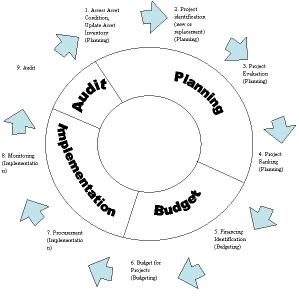

Absolute return is the growth in your mutual fund investment expressed in percentage terms. For example, if your investment grew from Rs 1 to Rs 1.4 lakhs in three years, you made a profit of Rs 40,000 and your absolute return is be 40%. The problem with absolute return is that, it does not take into account investment tenure. A 40% absolute return in 3 years can be considered to be reasonably good, but 40% absolute return in 10 years cannot be considered to be good because it may be zero or negative on an inflation adjusted basis, assuming 4 – 5% inflation. CAGR in mutual fund is considered to be a much better measure of mutual fund performance because it takes into account investment tenure.

If we again consider the previous example, 20% is the returns that ‘A’ receives cumulatively over a period of two years. Annualized returns how much did the investor’s money grow each year to reach the final investment value. To check out the calculations automatically one can use mutual fund sip calculators which are available on many online platforms that ease up the task of doing calculations manually. SIP calculators available online which can give the exact figures, one can even use manual calculation methods to find out the annualized return amount.
How can you make utmost use Advantages of using a mutual fund calculator?
So your first impression is that the fund should have outperformed its benchmark. But when you calculate the return, the fund is actually underperforming its benchmark. Ltd. makes no warranties or representations, express or implied, on products offered through the platform. It accepts no liability for any damages or losses, however caused, in connection with the use of, or on the reliance of its product or related services. All efforts have been made to ensure the information provided here is accurate.
What is the difference between return and annualized return?
The annual return is a measure of how much the investment has grown or shrunk in one year. The annualized return is the geometric average of annual returns of each year over the investment period.
Two of the most popular methods are Absolute returns and Annualised returns. The winners of today may not continue with the winning streak year after year. In other words, reviewing the performance as mentioned above may not always be fruitful. Moreover, tracking and reviewing of a scheme’s portfolio is quite different from reviewing one’s own portfolio. A mutual fund investor should not worry themselves about the portfolio of a fund.
Trailing returns measure performance for just one block of time and show a point-to-point return. Thus, the trailing return of a fund doesn’t necessarily show the consistency or volatility of a fund. It means that Mr. X has earned 11.49% annually on an average on his investment. The lending transaction is purely between lenders and borrowers at their own discretion, and LenDenClub does not assure loan fulfilment and/or investment returns. Also, the information provided on the platform is verified or checked on the best efforts basis without guaranteeing any accuracy of the data/information verification.
Understanding the total annualized return on your investments is a key factor. The total annualized return indicates an investment’s average compounded returns over a 12-month period. The annual return expresses the stock’s increase in value over a stipulated period of time. In order to calculate an annual return, information on the current price of the stock and the price at which it was purchased it to be known. If any splits have occurred, the purchase price needs to be adjusted accordingly. Once the costs are determined, the simple return percentage is first calculated, with that estimated figure ultimately being annualized.
Annualized Returns:
Ex- Suppose one is planning to invest Rs. 12 Lakhs in a year and is making a monthly investment of Rs. 1 Lakh every month. The person finds out that after one year the investment has grown to 12.8 Lakhs. what are annualized returns For example, you have a CAGR of 15%, Starting amount of Rs 1 lakh and time period of 5 years. Return since launch One can ascertain the value of return since launch from the time an NFO gets closed.
However, CAGR is a good indicator of overall scheme performance. You can compare CAGRs of different mutual fund schemes and make informed investment decisions. Frequent review and tracking of mutual fund returns may tempt you into taking unwarranted impulsive decisions.
Rolling Returns
Although absolute return is a calculation of an investment’s success in terms of how much money you’ve gained or lost from the first transaction, annualised return shows how longer-term investments with different return rates produce value yearly. Please read the scheme information and other related documents carefully before investing. Please consider your specific investment requirements before choosing a fund, or designing a portfolio that suits your needs. Please read all scheme related documents carefully before investing. In the context of financial investments, return on investment means how much will your money grow if you invest in a particular stock or mutual fund or as the case may be. When calculating mutual funds returns, it is crucial to note the initial investment and redemption dates.
How do you calculate annualized return?
Example of calculating annualized return
To calculate the total return rate (which is needed to calculate the annualized return), the investor will perform the following formula: (ending value – beginning value) / beginning value, or (5000 – 2000) / 2000 = 1.5.
However, when one’s investment stretches over a certain duration and is paid at irregular intervals in installments, calculating CAGR becomes a chore. In such cases, especially for SIPs, using Extended Internal Rate of Return is often used to predict returns on investments. The return generated from an investment over a period of time is known as the absolute return but afterward, to compare the annual returns, absolute returns are converted into annualized returns. The direct returns on initial investment are computed using absolute returns, commonly referred to as point-to-point returns.
While looking at a mutual fund scheme’s performance, one must not be led by the scheme’s return in isolation. A scheme may have generated 10% annualised return in the last couple of years. But then, even the market indices would have gone up in similar way during the same period.
Difference between Absolute and Annualised Returns
The information contained on the Website may have been obtained from public sources believed to be reliable and numerous factors may affect the information provided, which may or may not have been taken into account. The information provided may therefore vary from information obtained from other sources or other market participants. Any reference to past performance in the information should not be taken as an indication of future performance. The information is dependent on various assumptions, individual preferences and other factors and thus, results or analyses cannot be construed to be entirely accurate and may not be suitable for all categories of users.
- The CAGR is not an indicator of sales that happened from the starting year to the last year.
- Useful for goal-settingAnnualized Return on Investment can be used to set performance targets and measure progress toward investment goals over time.
- Do not let an fall in NAVs tempt you to discontinue SIPs or redeeming units from a fund.
- The result is then divided by the cost of the investment and multiplied by 100.
For startup founders, Return on Investment can be used to evaluate the effectiveness of their marketing campaigns, product development efforts, and other investments. By tracking Return on Investment over time, founders can identify which strategies are working well and which ones need to be revised or abandoned. Let’s say you invest Rs 1000 in a mutual fund, which gives you a Return on Investment of 10% every year. The material/information provided in this Website is for the limited purposes of information only for the investors. The investor may get disappointed to see just a 6.67% absolute return.
This method is used when the investment duration is exactly 1 year. And the amount varies from one fund to another and is usually some percentage of your redemption value. By entering your personal details, you hereby authorize Mirae Asset Mutual Fund and/or its authorized service provider to contact you and this will override any NDNC registration made by you. Also, for dividend income in excess of Rs 5,000 in a financial year; the fund house shall deduct a TDS of 10% on such income. Standard deviation is the deviation of the fund’s return around mean.
Calculators
In 2020, Mr. earned a return of 10%, and in 2021, a return of 13%. Comparing the annualized total return to the average return can frequently provide a clearer picture of the investment’s value. The main aim of an investment is to make a profit, but far too many people treat investments in a reckless manner without a thorough understanding of how they work. An investor could be engaged in a losing or inferior investment without even realising it if they don’t have this information. As a result, it’s important to be familiar with and appreciate the two most popular investing metrics.
For Dividend Distribution Tax, the dividend income from this fund will get added to the income of an investor and taxed according to his/her respective tax slabs. Average return generated by the fund during a specified period. A fund with a higher Treynor ratio is considered better than a fund with a lower Treynor ratio.
Under-performance in a falling market, i.e. when the NAV of the scheme falls more than its benchmark , is the time when you must review your investment. You can use absolute returns and simple annualised returns when the investment period is less than one year. However, to calculate lumpsum investment with an investment period of over 12 months, you can use Compounded Annual Growth Rate . XIRR or Extended Internal Rate of Return is used to calculate mutual fund returns for the SIP mode of investment. SIPs or systematic investment plans involve regularly investing small amounts of money into a mutual fund scheme at a certain predefined time interval. If one opts to pay monthly installments and they redeem their invested amount on a certain day, the returns for their SIP will vary based on their holding period.
How do you calculate annualized return?
Example of calculating annualized return
To calculate the total return rate (which is needed to calculate the annualized return), the investor will perform the following formula: (ending value – beginning value) / beginning value, or (5000 – 2000) / 2000 = 1.5.
